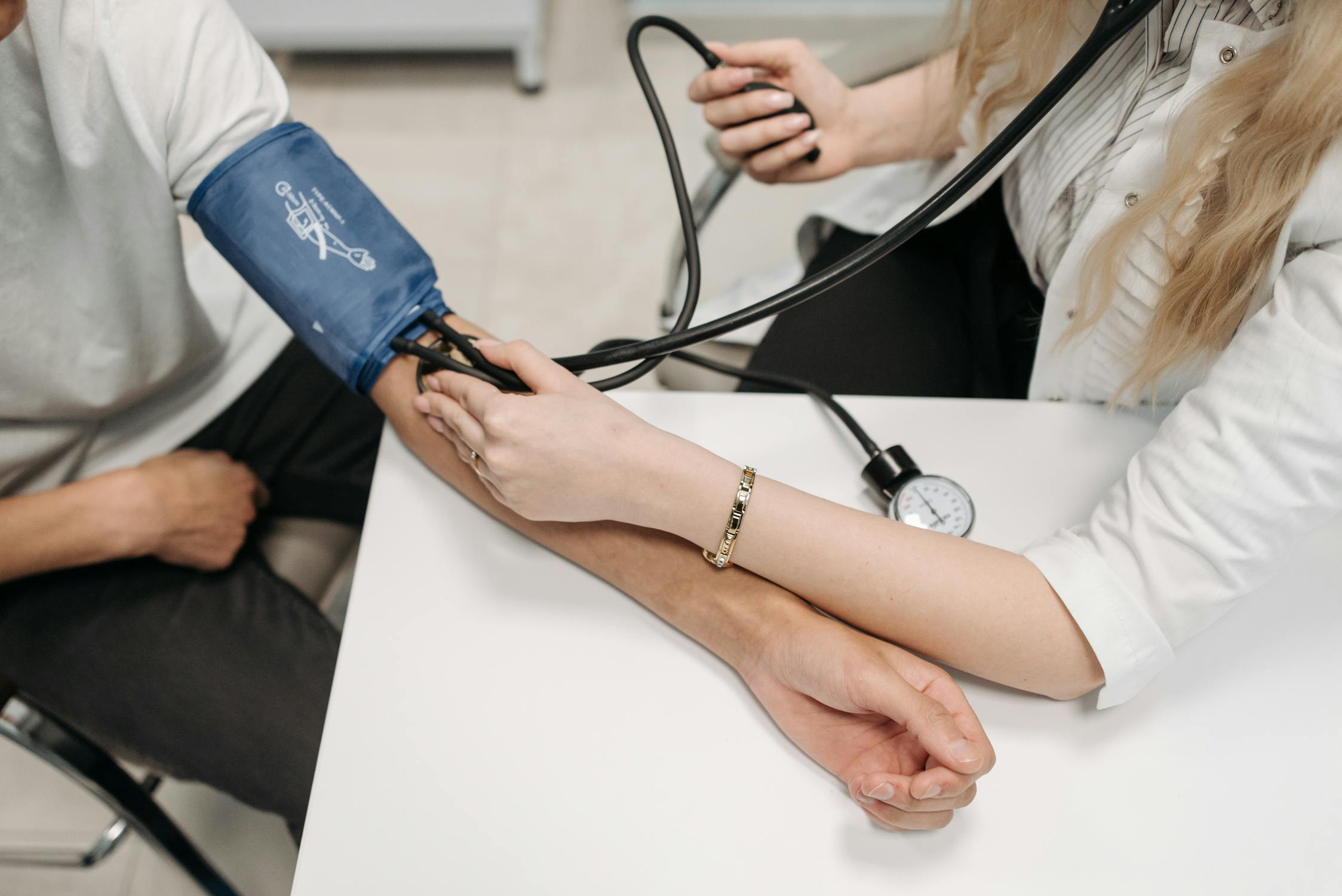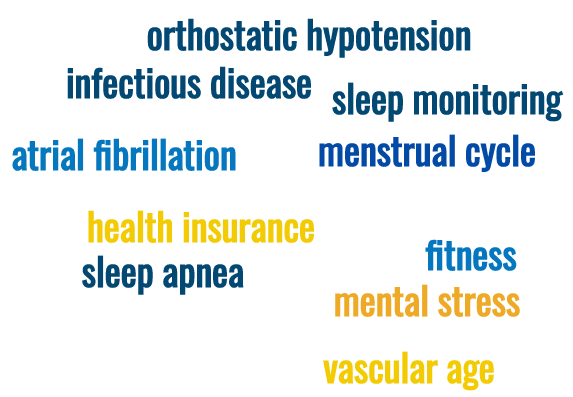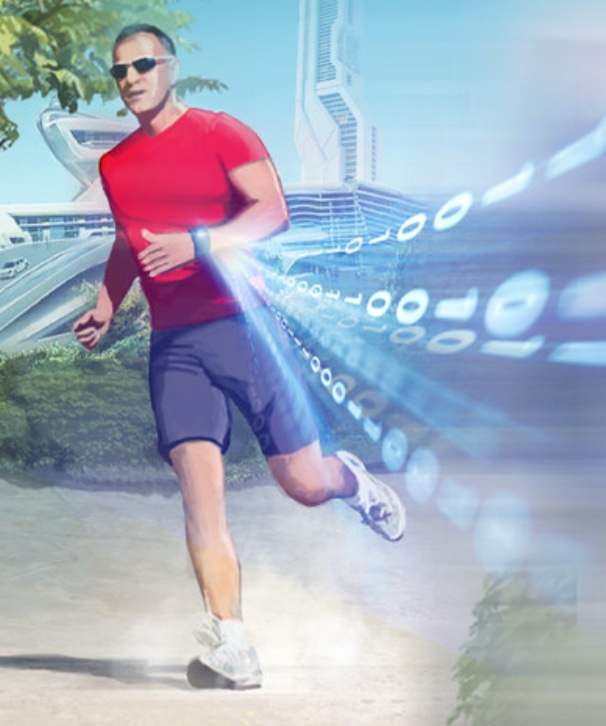Wearable Devices¶
Wearable devices present great promise for health monitoring.
Unobtrusive health monitoring¶
First, wearables provide opportunity to monitor health unobtrusively. Traditional physiological measurement devices can be obtrusive. Take for instance taking a 12-lead ECG measurement, which is used to assess heart rhythm and conduction:

Fig. 2 Measuring a 12-lead ECG (electrocardiogram). Source: NARA & DVIDS Public Domain Archive¶
The patient has to attend a health clinic, where a trained operator connects the device using several electrodes and wires.
Consider also traditional blood pressure measurement devices:

Fig. 3 Measuring a 12-lead ECG (electrocardiogram). Source: Pavel Danilyuk from Pexels¶
Even automated blood pressure devices require the individual to wear a cuff, which is inflated for each blood pressure measurement.
Wearable devices provide an alternative approach. They come in a range of form factors, and can monitor health unobtrusively:

Fig. 4 Wearable devices. Source: Charlton et al. Individual images: P. Charlton under CC BY 4.0; cropped from image by Marco Verch (CC BY 2.0); cropped image from Passler et al. under CC BY 4.0; cropped from image by GEEK KAZU (CC BY 2.0); cropped from image by Pixels (Pixabay License); cropped from image by Luke Chesser (CC0 1.0).¶
Wearable devices can measure an ever-increasing range of physiological parameters:

Fig. 5 Physiological parameters measured by wearables. Generated using WordCloud Generator.¶
Consequently, they may be useful for a range of health and fitness applications, including detecting undiagnosed diseases, identifying the early signs of illness, and wellbeing applications:

Fig. 6 Potential health and fitness applications for wearables. Generated using WordCloud Generator.¶
Economic health monitoring¶
Potentially, wearables could provide affordable health monitoring. Whilst I wouldn’t necessarily recommend buying the cheapest wearable available, they can cost very little (e.g. $2.99 from Amazon at the time of writing). Hopefully, in time, high quality wearables could be affordable to most people.
Empowered health monitoring¶
Wearables empower individuals to take ownership of their fitness, and potentially modify their lifestyles to improve their health and wellbeing.

Fig. 7 Empowering individuals. Source: cropped from an image by Brother UK on flickr.¶